|
|
|
|
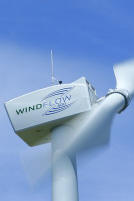



○
Overview
○
Synchronous Power-train
●
Windflow™ 500




Executive Flyer

Power-train Brochure
 |
The Windflow™
500 |
|
Proven mid-size turbine design for a wide
range of applications. Our wind turbines are cost-effective, because they
have a world-leading ratio of energy output to turbine weight, and they
eliminate the need for power electronics.
|
|
|
|
SyncWind. will work with established or start-up wind
turbine manufacturers who are interested to build the Windflow™ 500 turbine.
Please see the photo gallery and the details below. |
Monan in the Outer Hebrides, Scotland
Gebbies Pass, New Zealand
Monan in the Outer Hebrides, Scotland
Easter Aberchalder in the highlands above Loch Ness, Scotland
New Holland in the Orkneys, Scotland
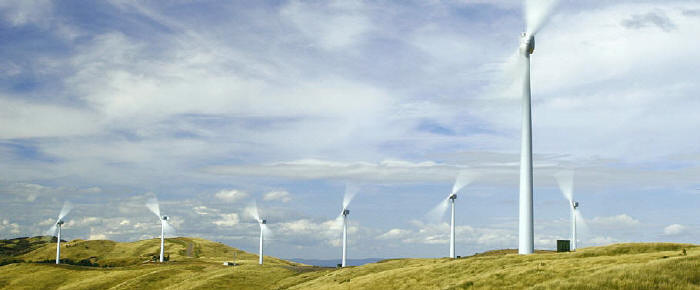
1. Introduction and Summary
2. Windflow™ 500 Track Record
3.
Proven 500 kW Wind Turbines, IEC Certified Design
4.
SyncWind
's Proprietary Technology
5.
Intellectual Property
1. Introduction and Summary
The Windflow™ 500 turbine combines synchronous generation with SyncWindi's
proven 2-bladed rotor with pitch-teeter coupling (PTC) and its advanced
teeter control system (TCS). This is ideal for turbulent, hill-top sites
where the light-weight, mid-size turbine facilitates road access and
craneage, and the 2-bladed rotor's PTC and TCS handle turbulence with
robustness and stability.
Past projects are testament to our commitment to
quality, and to the proven quality of our cost-effective certified wind
turbines that have extensive field experience in arduous conditions. These
include our wind farms in high wind sites in New Zealand (Gebbies Pass and
Te Rere Hau) and Scotland (Westray, New Holland and Ludenhill in the
Orkneys, Monan in the Outer Hebrides, Easter Aberchalder in the highlands
above Loch Ness, and Kingseat near Edinburgh). See our project gallery
for photos.
The Windflow™ 33-500 is
independently
certified
 .
Windflow’s 500 kW turbine has been International Electrotechnical Commission
(IEC) certified by
Lloyd's
Register (class 1A to IEC 61400-1:2008, Edition 3) and has a
track-record of more than 1000 turbine-years of synchronous wind power
operation at over 95% availability. This means low risk to you and your
project, and more confidence in financing. .
Windflow’s 500 kW turbine has been International Electrotechnical Commission
(IEC) certified by
Lloyd's
Register (class 1A to IEC 61400-1:2008, Edition 3) and has a
track-record of more than 1000 turbine-years of synchronous wind power
operation at over 95% availability. This means low risk to you and your
project, and more confidence in financing.
With more than 1000 turbine-years operating experience and a fleet-wide
average availability of 95%+, the Windflow™ 500 has proven its robust
design and high reliability in some of the most challenging wind
conditions in the world.
|
|
|
2. Windflow™ 500 Track Record
|
|

See our
project gallery
for more photos. |
New Zealand, Te Rere Hau
Ninety-seven Windflow™ 33-500 turbines were installed
at the Te Rere Hau wind farm near Palmerston North, New Zealand between 2006
and 2011. This site exhibits some of the most challenging wind conditions in
the world, with greater than 10 m/s average annual wind speed. Some of the
turbines on site see monthly-average wind speed above 15 m/s. Many of the
turbines experience significant hill effects, and extreme turbulence and
wind shear. Despite these challenging conditions, the Windflow™ 33-500 has
proven itself by accumulating more than 1000 turbine-years of operation at
higher than 95% availability. |
|

See our project gallery
for more photos. |
United Kingdom
From 2013 to 2016, seven Windflow™ 33-500 turbines and
one Windflow™ 45-500 were installed in Scotland’s Highlands and Islands.
Despite the remote locations, all are grid-connected turbines feeding power
into the local utility grid. Most of the turbines see complex terrain
effects and high turbulence.
|
|

Independent Type Certification |
3. Proven 500 kW Wind Turbines,
IEC Certified Design
SyncWind. currently
offers two wind turbine products: the proven Windflow™ 33-500 for high wind
speed sites and the Windflow™ 45-500 for medium wind speed sites.
The Windflow™ 33-500 wind turbine has been
designed for a 20-year life at a Class 1A site in accordance with IEC
61400-1:2005 (Edition 3). It is a robust machine designed for sites with up
to 10 m/s average annual wind speed, and storms gusting up to approximately
70 m/s.
Independent Type Certification
 was
awarded in September 2010 by
Lloyd's
Register. was
awarded in September 2010 by
Lloyd's
Register.
The Windflow™ 45-500 has been designed for a
20-year life at a Class 2A site in accordance with IEC 61400-1:2005. It is
designed for sites with up to 8.5 m/s average annual wind speed, and storms
gusting up to approximately 60 m/s. Prototype Windflow™ 45-500s have been
installed and site commissioned in Texas, USA in early 2015, and Scotland in
late 2016. |
|
|
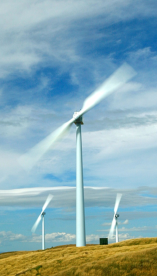
Windflow™ 33-500 Turbine

|
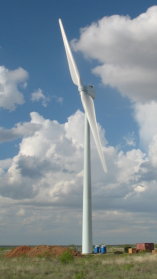
Windflow™ 45-500 Turbine
 |
|
|
|
|
|
4.
SyncWindi's
Proprietary Technology
SyncWindi
utilizes several cutting-edge technologies to enable
lightweight but high-performing and extremely robust wind turbine designs.
These include:
-
Two-bladed rotor, with SyncWindi's
proprietary Teeter Control System™, which combines passive load
shedding with improved stability and energy capture.
-
The patented
Torque Limiting Gearbox™,
which enables the use of a synchronous generator directly on line without
the need for expensive and unreliable power electronics.
-
SyncWindi's
proprietary Low Variable Speed
System™ reduces blade tip noise in low
wind conditions and improves energy capture.
On all wind turbines turbulence, wind shear, tower shadow, pitch imbalance
and yaw error cause an imbalance of loads on the rotor. Three-bladed
machines have no simple means of mitigating these loads, and without
sophisticated controls they are transmitted into the drivetrain and gearbox
causing substantial design and reliability problems.
Two-bladed rotors lend themselves to the use of a
teeter hinge, a well-tested and understood technology that passively
relieves most of the imbalanced loads on the rotor. Loads simulation
comparisons indicate a 50%+ reduction in main shaft bending fatigue loads
for teetering two-bladed machines versus comparably-sized three-bladed
machines. This translates into substantial reductions in weight and cost
throughout the turbine.
|
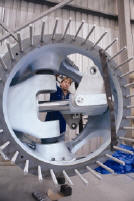
Teeter Control System™ |
a) Teeter Control System™
SyncWindi's
design extends this idea to incorporate pitch-teeter coupling, which
improves both energy capture and teeter stability during transients. These
features are embodied in SyncWindi's
proprietary Teeter Control System™.
The success of this design philosophy is evident in the
Windflow™ 500 products having the highest annual energy production (AEP,
measured in MWh/year) per tower top mass (measured in tonnes) in their
respective design classes. And since this is achieved through load
reductions rather than through exotic materials, it translates into an
extremely cost-effective design.
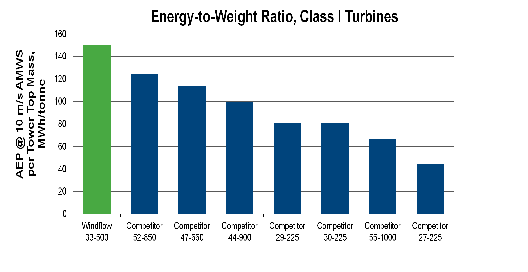
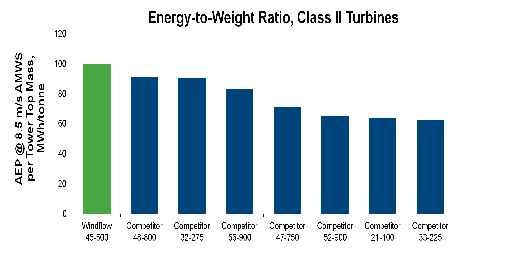
|
|
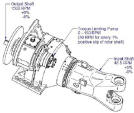
Torque Limiting Gearbox™
Diagram |
b)
Torque Limiting Gearbox™ (TLG)
Just as the Teeter Control System™ provides a passive means of mitigating
rotor imbalance loads, so does SyncWindi's
patented Torque Limiting Gearbox™ (TLG) provide a passive mechanical means
of removing torque transients from the drivetrain. The TLG provides
near-instantaneous response to torque transients, whether induced by the
wind or by electrical grid disturbances, thereby reducing torsional fatigue
and impact loads throughout the power-train. This results in a highly
reliable, low maintenance turbine.
The TLG has two output shafts. The majority of the wind
power captured by the rotor is transmitted through to the main output shaft,
which drives a synchronous generator, synchronized to the grid at 1500/1800
RPM.
The second output shaft drives a low-inertia torque
limiting pump. This pump energizes a proprietary hydraulic subsystem which
manages any rapid fluctuations in the input wind power by a combination of
storage and dissipation means.
The TLG protects the power-train from torsional impact
and fatigue and enables the use of a synchronous generator directly on line.
Synchronous generators eliminate the need for power electronic frequency
conversion, saving both upfront and maintenance costs. They also enable
abundant reactive power support for weak or unstable grids. This is a major
advantage in the markets seeking to maximise renewable energy capture.
|
|
|
c) Low Variable Speed System™
SyncWindi's
proprietary Low Variable Speed System™ enables the turbine rotor to run 40%
slower than its maximum RPM while maintaining the output shaft speed
constant. This improves aerodynamic efficiency and turbine output at lower
wind speeds, enables cut-in at lower wind speeds, and reduces blade tip
noise in low wind conditions.
|
|

|
5. Intellectual Property
The intellectual property SyncWindi
has available for manufacturing partners includes:
-
600+ turbine component drawings.
-
150+ drawings of special-purpose tooling.
-
50+ procedure drawings for nacelle assembly and
erection processes.
-
20+ detailed specification documents.
-
Detailed factory commissioning and field commissioning
procedures.
-
Operating manuals, maintenance manuals and various
repair procedures.
-
Bladed software models of the turbines for mechanical
loads analysis and performance simulations.
-
4000+ pages of detailed calculations to achieve IEC
Type Certification.
-
Comprehensive Type Testing reports for the Windflow™
33-500.
-
PLC turbine control software.
-
Turbine and wind farm SCADA software.
-
Extensive team know-how in 2-bladed wind turbine design
and control.
|
|
|
|
|